A Day in the Life of a Ski Patroller
It’s 7 a.m. and the sun struggles to rise from its slumber. The horizon stands peaceful as its lilac hues morph into those reminiscent of pink lemonade. Several inches of new fallen snow blanket the mountainside and dampen every noise for miles. Frost-stenciled chair lifts dangle awaiting the busy day to begin. And leaning up against his ski poles is Ross Titilah atop Lone Mountain taking it all in.
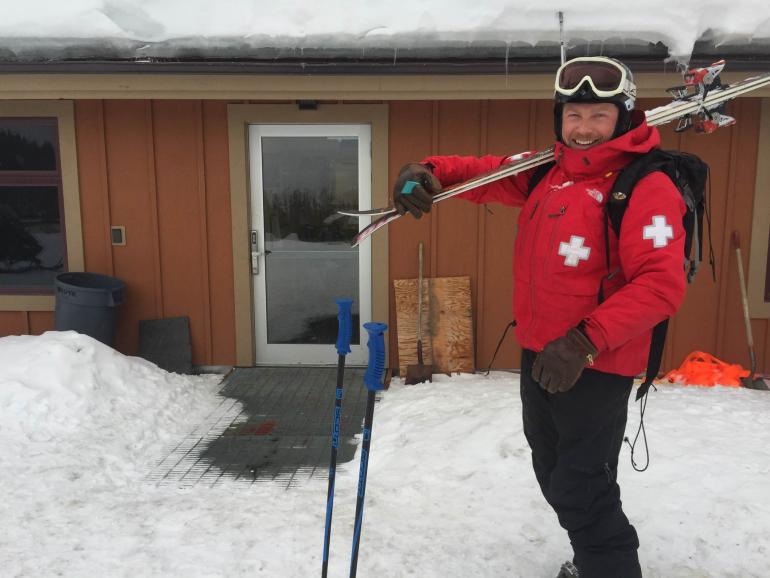
Titlah is among the lucky few who are greeted by such a scene at the start of most work days.
“It’s truly something else to have that solitude and beauty all around you and be able to embrace that grandeur,” said Titilah, ski patroller at Big Sky Resort.”
Growing up in New Hampshire, Titilah admitted falling in love with skiing from an early age. After dreaming of skiing in the Rocky Mountains for years, Titilah attended the University of Montana in Missoula. While he pursued a degree in history, Titilah chuckled admitting that he also spent a significant portion of college skiing.
After graduating, Titilah began working at Bridger Bowl Ski Area near Bozeman in 2003. Something about being on the snowy mountainside every day struck a chord in him, and during the summer of 2004, he began working for Big Sky Resort as an EMT and ski patroller. He’s been there ever since.
According to Titilah, Big Sky currently employs approximately 105 professional ski patrol and a volunteer crew of around 150 ski patrol. At a bare minimum, all of Big Sky’s ski patrol are licensed EMTs but several are additionally licensed paramedics and physicians. Of the extensive ski patrol crew at Big Sky, Titilah is one of only about six other patrollers who works year round at the resort.
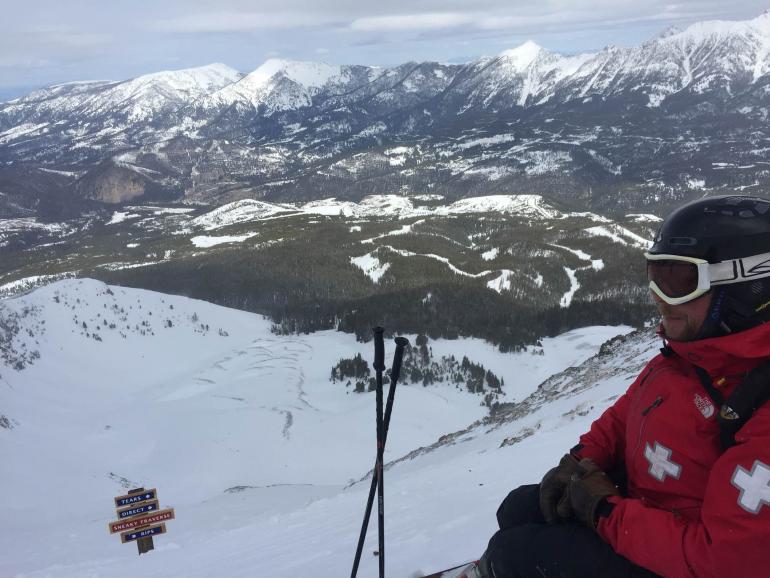
Once November 23rd hits and Big Sky’s hill opens to the public for the season, Titilah’s days of routine around the resort shift to ones of unpredictability.
Titilah explained that a typical day for him begins the night before by prepping his breakfast and lunch for the next day. Breakfast consists of hard-boiled eggs, plenty of coffee, and a smoothie that Titilah has “been working on perfecting for years.” He credits the extra ginger and turmeric he puts in his smoothie for keeping him in tip-top shape. Lunch is normally built from dinner the night before and always includes a protein, carb, and vegetable.
Currently Titilah’s work week is Sunday through Wednesday. Depending on whether the mountain received new snow over the night, he arrives for the day around 6 a.m. At approximately 6:30 a.m. all of the ski patrol convene for their daily morning meeting. The team is briefed on weather forecasts for the day and any special mountain events happening. By 7 a.m. Titilah is bundled up and perched on his first chair lift ride up the mountain for the day.
Upon reaching the top, Titilah and the other patrollers get to work, inspecting the inventory of medical and rescue equipment located at all nine medical stations scattered about the hill. From there the patrol begin their run checks. From checking rope lines and closures to detecting potential hazards on the mountain like downed trees, side slipping areas, exposed rocks, and avalanche prone areas, Titilah makes sure the hill is as safe as possible for skiers that day.
At 9 a.m. Big Sky’s lifts open to the public. Titilah and the other patrollers spread out to “fly the cross,” a reference to the white crosses on their red jackets. On any given day, upwards of 45-50 ski patrol cruise the 5,800 acres of terrain spread out across four mountains in the Madison Range south of Bozeman.
Titilah explained that guest services/relations is a big part of his job. From giving directions to skiers on the hill and monitoring the safety of high flow traffic areas to waiting for dispatch to radio in an incident, each day on the mountain is different but all are busy.
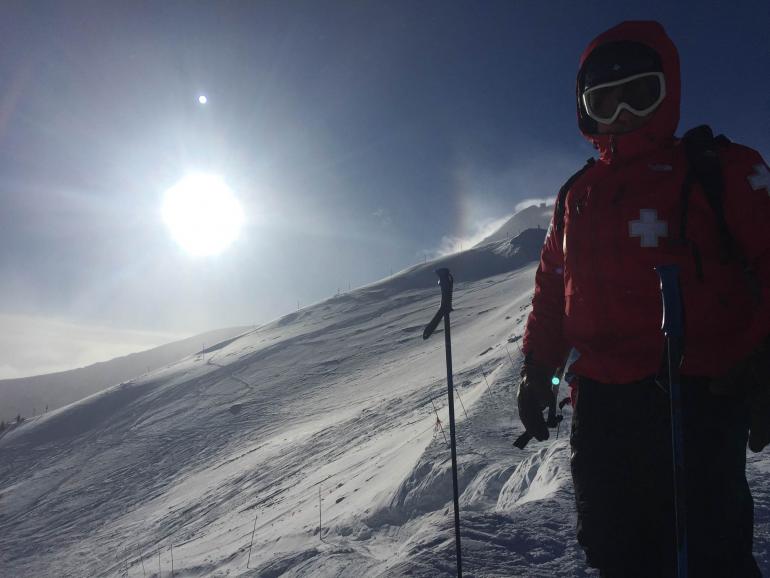
When an injury occurs on the mountain, a call is first sent to dispatch. From there dispatch sends out a “10-50 code” to the patroller’s radios indicating that a skier needs assistance. Titilah explained that the closest patroller radios back that they will respond to the location. Upon reaching the downed skier, Titilah performs an assessment to determine the extent of the injury and what the following steps should be. If necessary, a toboggan and other equipment is brought to the scene and the skier is safely packaged and brought down the mountain.
How exactly does Titilah himself remain calm in such moments? He shared that besides being part of his training, he learned a lot about remaining calm from observing senior patrollers.
“I take pride in reassuring and calming injured guests when things get excited,” said Titilah. “We’re here to ensure the safety of everyone and being agitated on the scene isn’t good for anyone.”
During a typical season at Big Sky, hundreds of EMS responses occur—making Titilah’s and the other patroller’s role so crucial.
At 3:30 p.m. each day Big Sky’s periphery lifts close while all others close around 4 p.m. Titilah and the other patrollers ride the last chair on every lift on the hill and work on trail closures by helping guests back to the base area and looking for any hazards. Once every patroller is present and accounted for, Titilah’s day finally ends around 5:30 p.m.
In beginning his 14th ski season at Big Sky, Titilah admits loving what he does today just as much as on his first day on the job. “I realized that this could be an actual career,” said Titilah. “I fell in love with it….It’s exciting and easy to call the mountain home.”
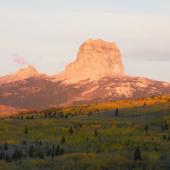

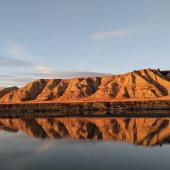



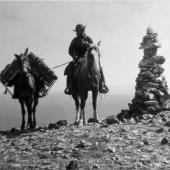





Leave a Comment Here